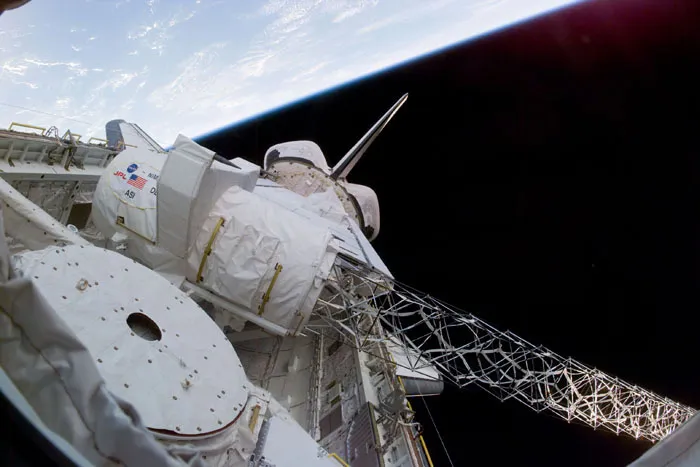25 Years of SRTM
I noticed earlier last week that I just missed the 25th anniversary of the mission of the Shuttle Radar Topography Mission aboard STS-99. I’m not sure there has been a more important elevation data product that has been released to the public than SRTM.

Given the uncertainty of funding for government programs in the new Trump administration, I’m not sure we’ll see another public 3D dataset in my time. Sure, there are private companies who collect much more detailed elevation data than SRTM, but none are as freely available as SRTM is (hopefully not was).

25 Years of SRTM
I noticed earlier last week that I just missed the 25th anniversary of the mission of the Shuttle Radar Topography Mission aboard STS-99. I’m not sure there has been a more important elevation data product that has been released to the public than SRTM.

Given the uncertainty of funding for government programs in the new Trump administration, I’m not sure we’ll see another public 3D dataset in my time. Sure, there are private companies who collect much more detailed elevation data than SRTM, but none are as freely available as SRTM is (hopefully not was).

Spring Training 2025

This week is one of the best in baseball—the start of Spring Training, with players practice already underway. Sadly, it’s been a long time since the Giants last made a World Series run, and the Dodgers are as annoying as ever. But hey, the team is healthy, and baseball is always fun to watch!

Spring Training 2025

This week is one of the best in baseball—the start of Spring Training, with players practice already underway. Sadly, it’s been a long time since the Giants last made a World Series run, and the Dodgers are as annoying as ever. But hey, the team is healthy, and baseball is always fun to watch!

Resurrecting Planet Geospatial
UPDATE: We have the domain working, you now just need to go to geofeeds.me and you’ll get the same results as below. The feed is at geofeeds.me/feed. You don’t need to update anything as the old urls will continue to work. Full speed ahead, make sure you reach out to Bill or myself if you want your blog, newsletter or other writing added.
A couple days ago, Bill Dollins reached out to me and had a crazy idea:
“Forget podcasting. We should resurrect planetgs”
It took me all of 10 seconds to respond, “Hell yes”. You can read the technical way it was brought back on Bill’s blog:
So, “Neptune” is born. The name is a nod to what Planet and Venus did/do, while the “N” planet hints at the Node underpinnings. Feel free to check it out. It’s about 50% me and about 50% Cursor. It’s not all the way baked, but good enough to release.
A lot has changed since I put Planet Geospatial to bed. It’s been 10 years, longer than Planet Geospatial was alive since the python script culled all those Blogger sites and spit out a HTML page and an RSS feed. The world has changed a couple times over, blogs which were falling out of style have started to come back, newsletters are everywhere and Twitter is a cesspool of junk.
Many of us had Planet Geospatial as our homepage (back when that was a thing) but feel free to grab the new temporary URL https://whale-app-k5eg5.ondigitalocean.app/view and the new feed https://whale-app-k5eg5.ondigitalocean.app/feed. We’re working at getting an easier domain set up because I let PlanetGS.com go many years ago and alas it has been taken.
I hope this helps many of you start blogging again, we need all the good content to survive the next few years.
Resurrecting Planet Geospatial
UPDATE: We have the domain working, you now just need to go to geofeeds.me and you’ll get the same results as below. The feed is at geofeeds.me/feed. You don’t need to update anything as the old urls will continue to work. Full speed ahead, make sure you reach out to Bill or myself if you want your blog, newsletter or other writing added.
A couple days ago, Bill Dollins reached out to me and had a crazy idea:
“Forget podcasting. We should resurrect planetgs”
It took me all of 10 seconds to respond, “Hell yes”. You can read the technical way it was brought back on Bill’s blog:
So, “Neptune” is born. The name is a nod to what Planet and Venus did/do, while the “N” planet hints at the Node underpinnings. Feel free to check it out. It’s about 50% me and about 50% Cursor. It’s not all the way baked, but good enough to release.
A lot has changed since I put Planet Geospatial to bed. It’s been 10 years, longer than Planet Geospatial was alive since the python script culled all those Blogger sites and spit out a HTML page and an RSS feed. The world has changed a couple times over, blogs which were falling out of style have started to come back, newsletters are everywhere and Twitter is a cesspool of junk.
Many of us had Planet Geospatial as our homepage (back when that was a thing) but feel free to grab the new temporary URL https://whale-app-k5eg5.ondigitalocean.app/view and the new feed https://whale-app-k5eg5.ondigitalocean.app/feed. We’re working at getting an easier domain set up because I let PlanetGS.com go many years ago and alas it has been taken.
I hope this helps many of you start blogging again, we need all the good content to survive the next few years.